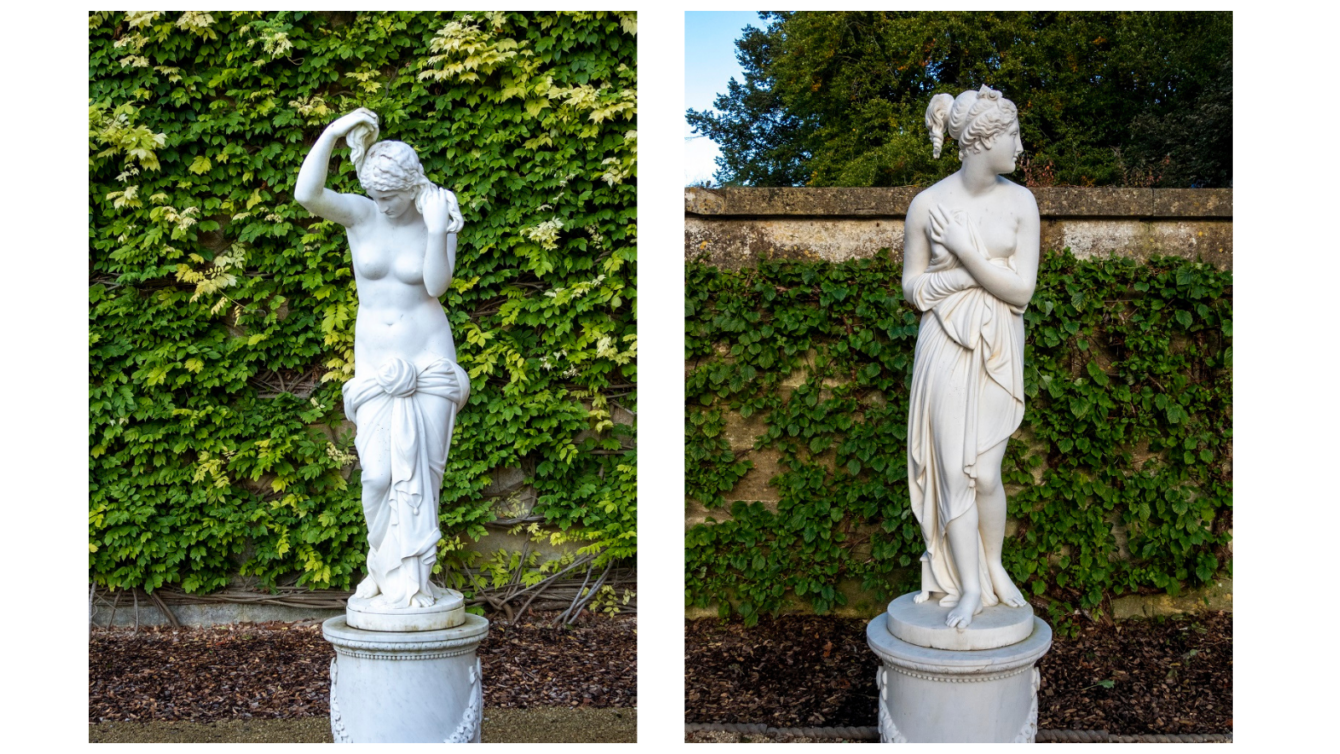Sculptures undergo necessary conservation at Blenheim Palace

Among the 40 historic sculptures, fountains, and sundials located in the gardens of the UNESCO World Heritage Site, Blenheim Palace, there is currently a restorative focus on all the lead sculptures located in the upper and lower Water terraces.
Every few years, Blenheim Palace facilitates a deep clean of its sculptures as well as a thorough assessment to inspect their condition. The preservation of the sculptures at present involves the process of stripping the paint using a non-toxic and biodegradable paint stripper that is absorbed into the paint and results in the swelling of the coating, thus lifting it away from the substrate. Lead sculptures are often painted with lead-rich oil-based paints to give the appearance of limestone or marble.
At Blenheim Palace, the sculptures were first painted in the early 2000’s with a special coating to protect the surface from general decay and weather adversities. By stripping the paint, the lead sculptures will need little maintenance, as monitoring of their condition and an annual wash will usually be all that is required.
This winter, as part of this continuous conservation process, the Collections team at Blenheim Palace will start covering some of the outdoor sculptures, focusing on two Italian, late 19th Century marble sculptures, to protect them from frost or any other harsh weather conditions that could negatively impact these historical pieces.
Situated between the Italian Garden and our recently renovated Orangery restaurant, the first sculpture is Antonio Frilli’s carved white figure of Venus on a cylindrical pedestal carved with a floral festoon, signed ‘A. Frilli, Firenze’. The second sculpture is Orazio Andreoni’s carved figure of Venus, also on a cylindrical pedestal carved with a floral festoon, this one indistinctly signed, ‘Andreoni, Roma’. The sculptures were acquired by the 9th Duke in circa 1925 and were unpainted bronze.
Kate Ballenger, Keeper of Palace and Collections, said, “The continuous conservation, cleaning, and care as well as the process of covering historic items during winter not only protects them from low temperatures but ensures that we keep the history alive for future generations to enjoy.”
Admission is valid with a Blenheim Palace ticket including Palace, Park and Gardens, Park and Gardens, Annual Pass or a Privilege Pass.
When you travel to Blenheim Palace via public transport, bicycle or fully electric car, you are eligible for a 30% discount off your Annual Pass or Palace, Park and Gardens day ticket (this discount is not valid for Privilege Pass or Park and Gardens tickets). Use the code GREEN30 for discount during online checkout and show your proof of travel by bus, train or bike on arrival.
To book tickets to Blenheim Palace visit, blenheimpalace.com/tickets-booking/
ENDS
Issued on behalf of Blenheim Palace. For more information please contact Cab Campaign blenheim@cabcampaign.co.uk
About Blenheim Palace
Home to the Dukes of Marlborough since 1705, the Oxfordshire Estate was designated a UNESCO World Heritage Site in 1987.
Set in over 2,000 acres of ‘Capability’ Brown landscaped parkland and designed by
Vanbrugh in the Baroque style, Blenheim Palace is also the birthplace of one of Britain’s most famous leaders, Sir Winston Churchill and it was his father who described the vista, on entering the Estate from the village of Woodstock, as the ‘finest view in England’.



